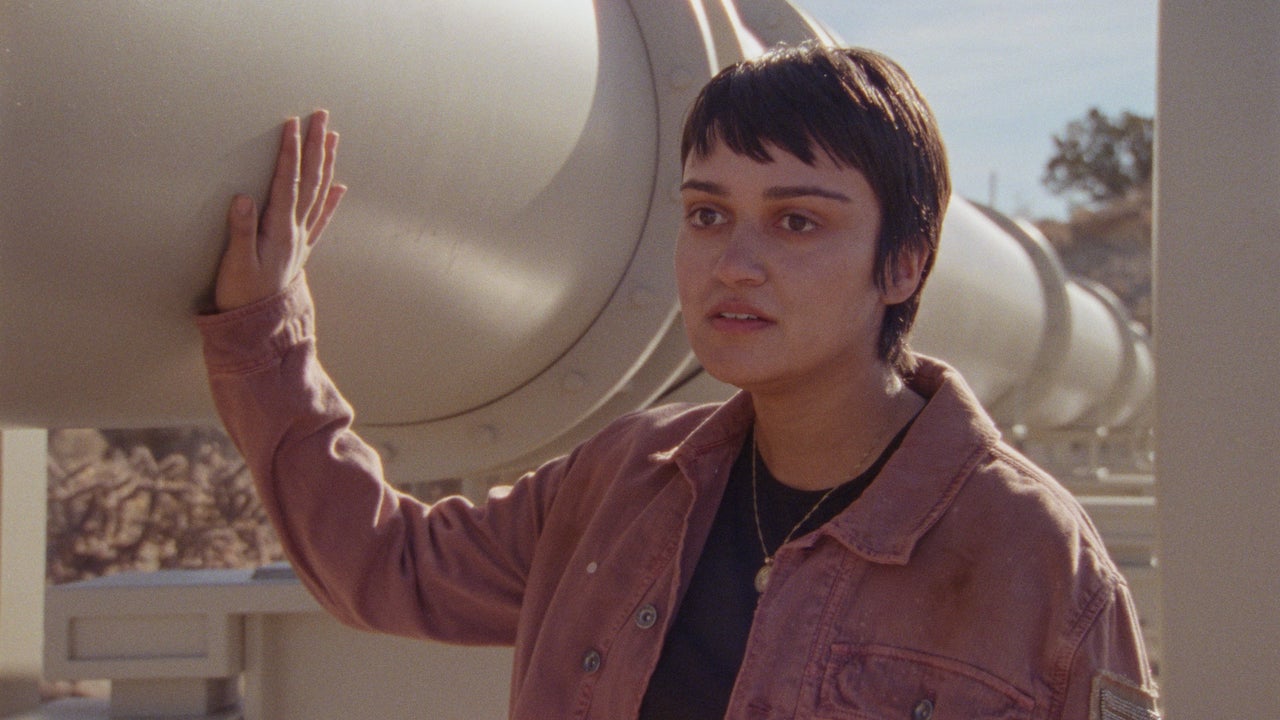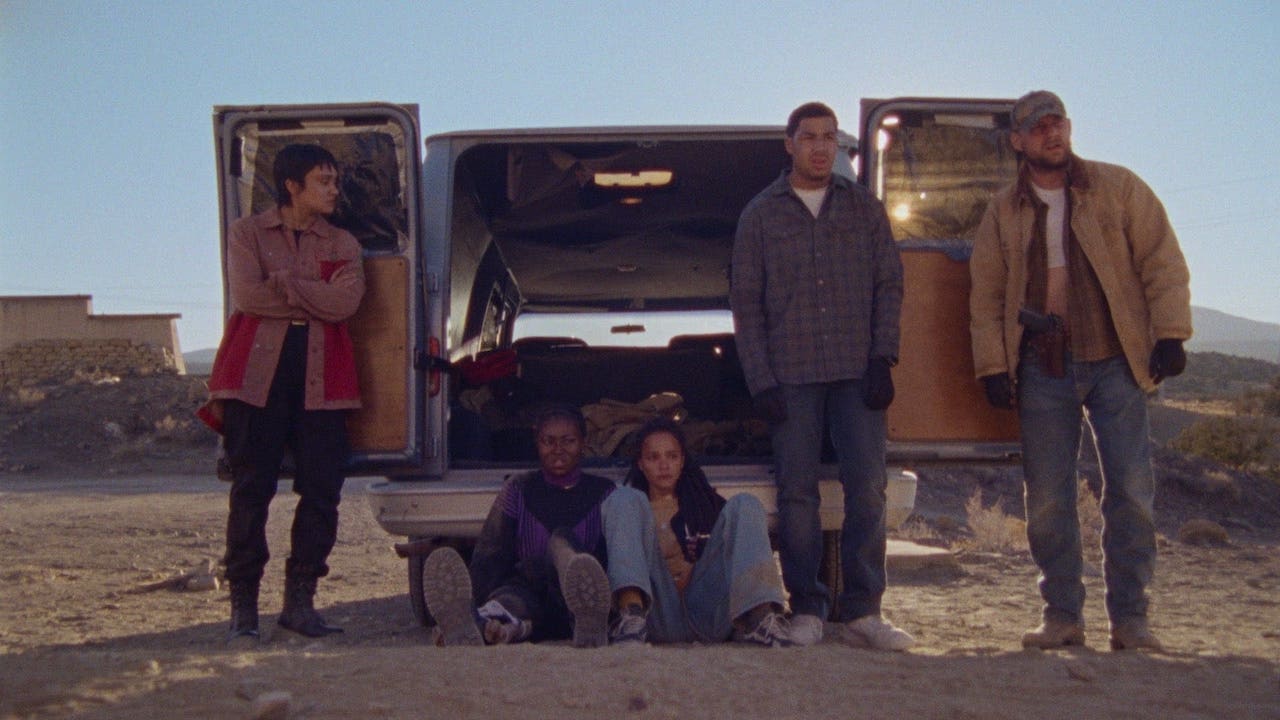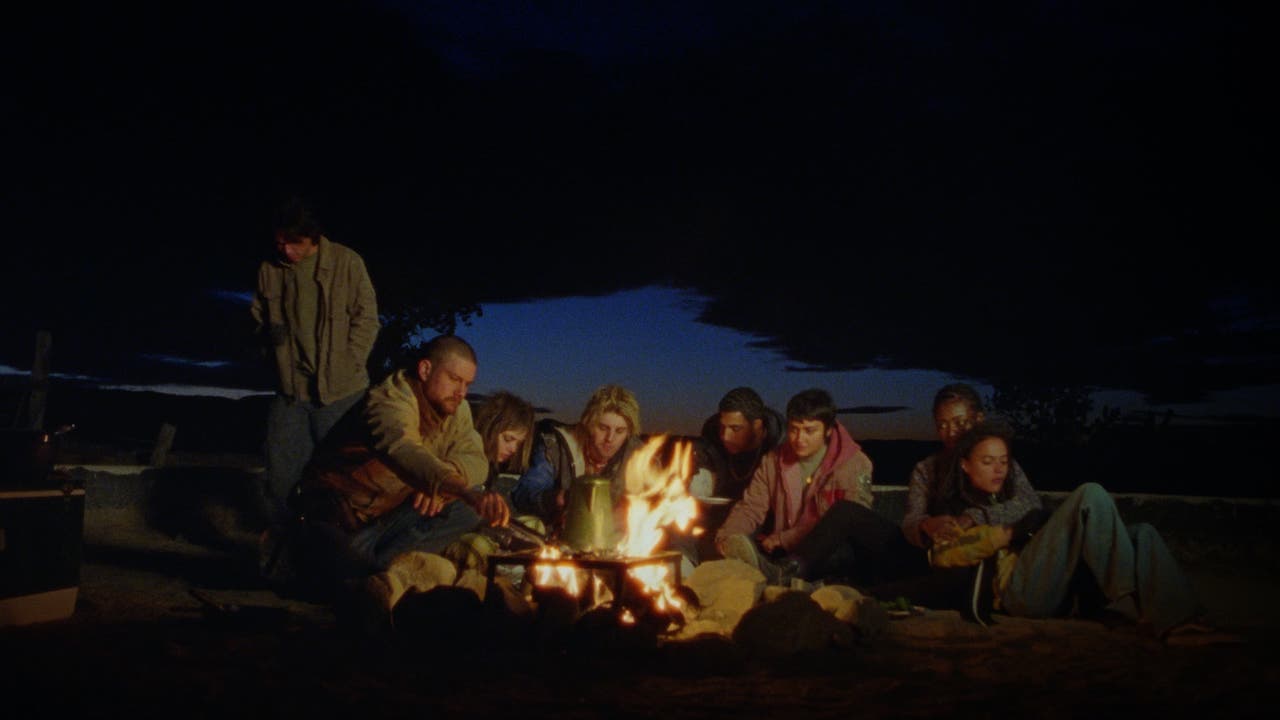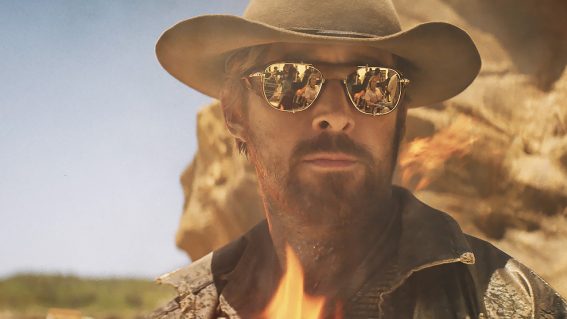How To Blow Up A Pipeline is an energising, urgent screen manifesto

Ahead of its premiere at MIFF and NZIFF, Eliza Janssen finds How To Blow Up A Pipeline to be a triumph of environmental activist propaganda: so new in its convictions, but with an old-school crime-thriller structure.
It’s not really the “how” that gets you. It’s the “who”—what kind of people would be willing to put their lives on the line just to send a violent ecological message? Who’s a true believer and who can’t be trusted? Also the “why”. Plenty of us are crippled with anxiety about the quickening destruction of our planet, but what motivates anybody to take that fragile future into their own hands?
You won’t actually come away from How To Blow Up A Pipeline with a handy dandy tutorial for homemade explosives, as some critics (and notably, climate-change deniers…and government agencies…) have worried. Although the film’s official website does feature a somewhat enticing map of oil and gas spills across the US. At the very least, it’s impossible to leave this rousing film without a renewed sense of optimism—even if we doomed viewers, and the gutsy young characters we’re watching, can only hope to fight fire with fire.
With big-budget features estimated to leave a carbon footprint of 3,000 metric tons each, some radical eco-activists might find the concept of an environmentalist action-thriller to be a thwarted effort in itself. How To Blow Up A Pipeline was shot over a (comparatively) swift 19-month production schedule, no doubt adding to its fresh, pacey tone, and more than proves its mettle as a legitimate big-screen manifesto. Directed by Cam’s Daniel Goldhaber, the film fictionalises the message of Andreas Malm’s pro-sabotage tome of the same name, with its subheading “Learning to Fight in a World on Fire”.
The choice to fight is obvious for our nominal protagonist Xochitl, played with heroic conviction by Ariela Barer, who also collaborated on the film’s screenplay. She feels only ennui in her passive climate protesting, and grief at the loss of her mother via a “freak heatwave”: to her, biting back at the oil refineries towering above her California home isn’t terrorism. It’s “self-defence”.
As we meet the rest of the motley crew she’s brought together to pull off a pair of explosions along a Texas pipeline, the “self” in that justification becomes complicated. Grizzled blue-collar patriot Dwayne (Jake Weary) lost his family’s land to a greedy oil company’s eminent domain laws; Native American oddball Michael (Forrest Goodluck) gets in petty fights with the oil rig workers ruining his reservation in North Dakota.

Xochi’s bestie Theo (Sasha Lane, firmly typecast in her bohemian bag since American Honey) seeks revenge through the sabotage mission, having developed terminal cancer after a lifetime of inhaling polluted air: if she’s going down, she’s taking some assets from the bastards who did this down with her. Almost wordlessly, they assemble and get to work building hair-trigger barrel bombs in the West Texan desert.
But what about Theo’s pacifist girlfriend Alisha (Jayme Lawson), and loved-up, barely grown club kids Logan (Lukas Gage) and Rowan (Kristene Froseth)? What about Shawn (Marcus Scribner), who’s only on board after one Twitter doomscroll and a few besotted chats with his uni mate Xochi? Despite their differences, the group are workmanlike, totally united in their purpose—but all of them, we sombrely see, have something to lose.
For such a contemporary cast and political message, How To Blow Up A Pipeline takes an old-school approach in how we learn these details about each character. At pivotal junctures in the present-day plot—did one of our heroes just explode?!—title cards (“MICHAEL”) will cut back to each character’s reason for showing up, cleverly drawing out the live-wire suspense of whether the operation will be a success. It’s reminiscent of French action cinema of the 1950s and 1960s, like Clouzot’s The Wages of Fear or Dassin’s Brute Force and Rififi, which often intersperse steely heist sequences with flashbacks to each perp’s personal motive. Cinematographer Tehillah De Castro utilises warm 16mm film to keep that classic, tightly-scripted structure looking raw and real on screen.

The film’s greatest strength, though, lies in how it implicitly convinces us of its importance through character drama and sheer tension. Expect no preaching, no strawman fat cat villains, no tearful infighting and shitty communication that might put the mission at risk: you’re just witnessing these angry young people painfully pushing their agenda ahead, and slowly understanding that it’s the only choice they feel they have. While Barer and Lane’s friendship is a strong anchor amidst the film’s diverse ensemble, Goldhaber is generous in doling out his film’s emotional heavy lifting across the cast, giving each outsider a reason and individual perspective on their communal act of terror.
But is that really the right word for what’s going on here? This is a conversation-starting film, and I’m certain some viewers will walk away with the uncomfortable feeling that they’ve just been manipulated into sympathising with a group of anti-social terrorists. To my mind, “eco-vandalism” would be a better word for Xochi and co’s actions: they’re careful about not harming any pipeline workers, not causing further oil spillage into the eco-system, and they acknowledge that they’ll unfortunately impact petrol prices for innocent civilians.

We first see Xochi when she’s deflating the tires of a fuel-guzzling, pollution-spewing SUV, leaving a bright yellow flyer on their windshield that explains exactly why the vehicle was targeted. Personally speaking, I left How To Blow Up A Pipeline with a balled fist and a dark desire to pull off the same kind of illegal mischief. They’re just objects, after all: corporate products, structures that insidiously ruin the world for everyone else. Better them than us, or the characters we come to cheer for as this invigorating screen manifesto reaches its explosive finale.


















